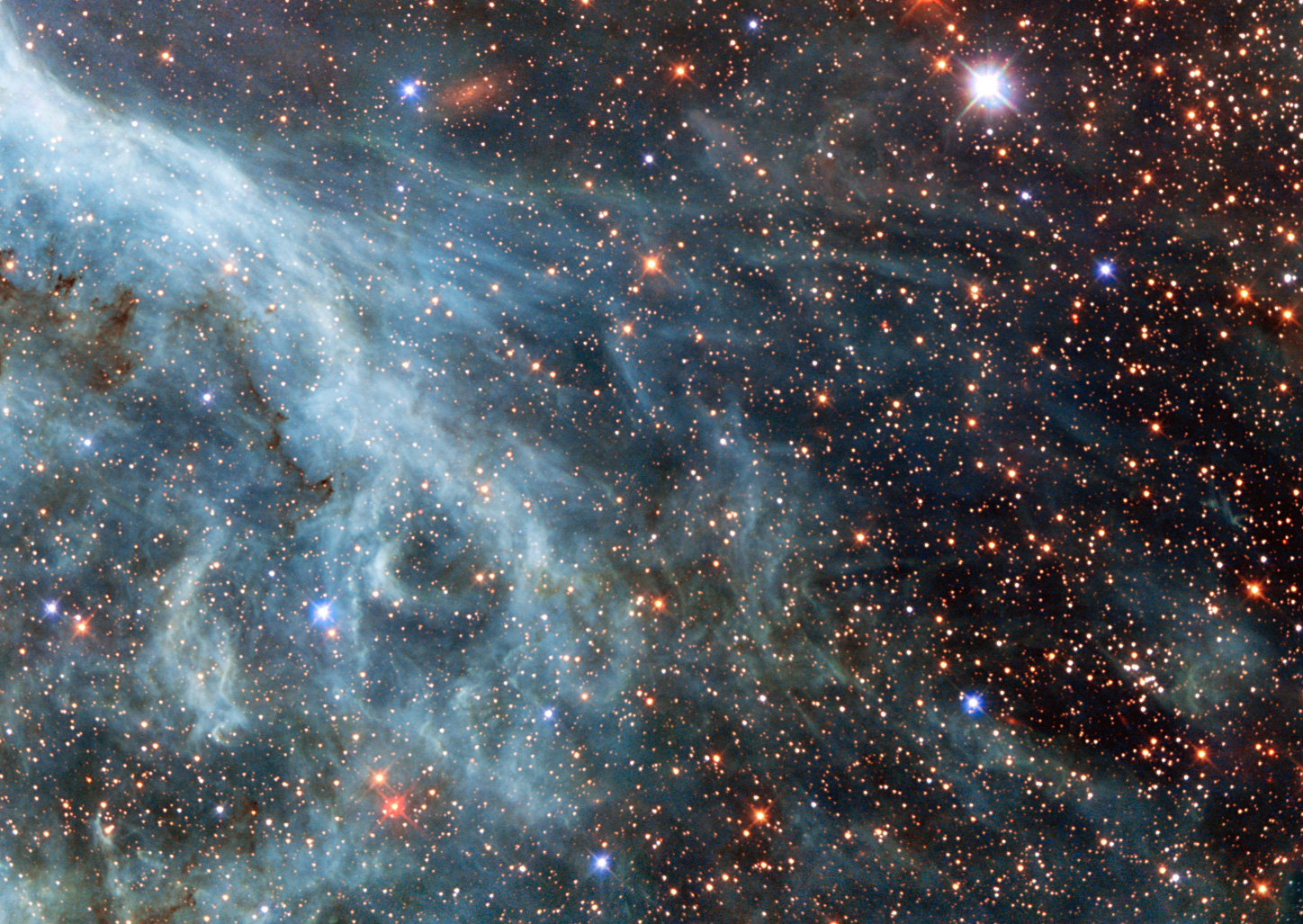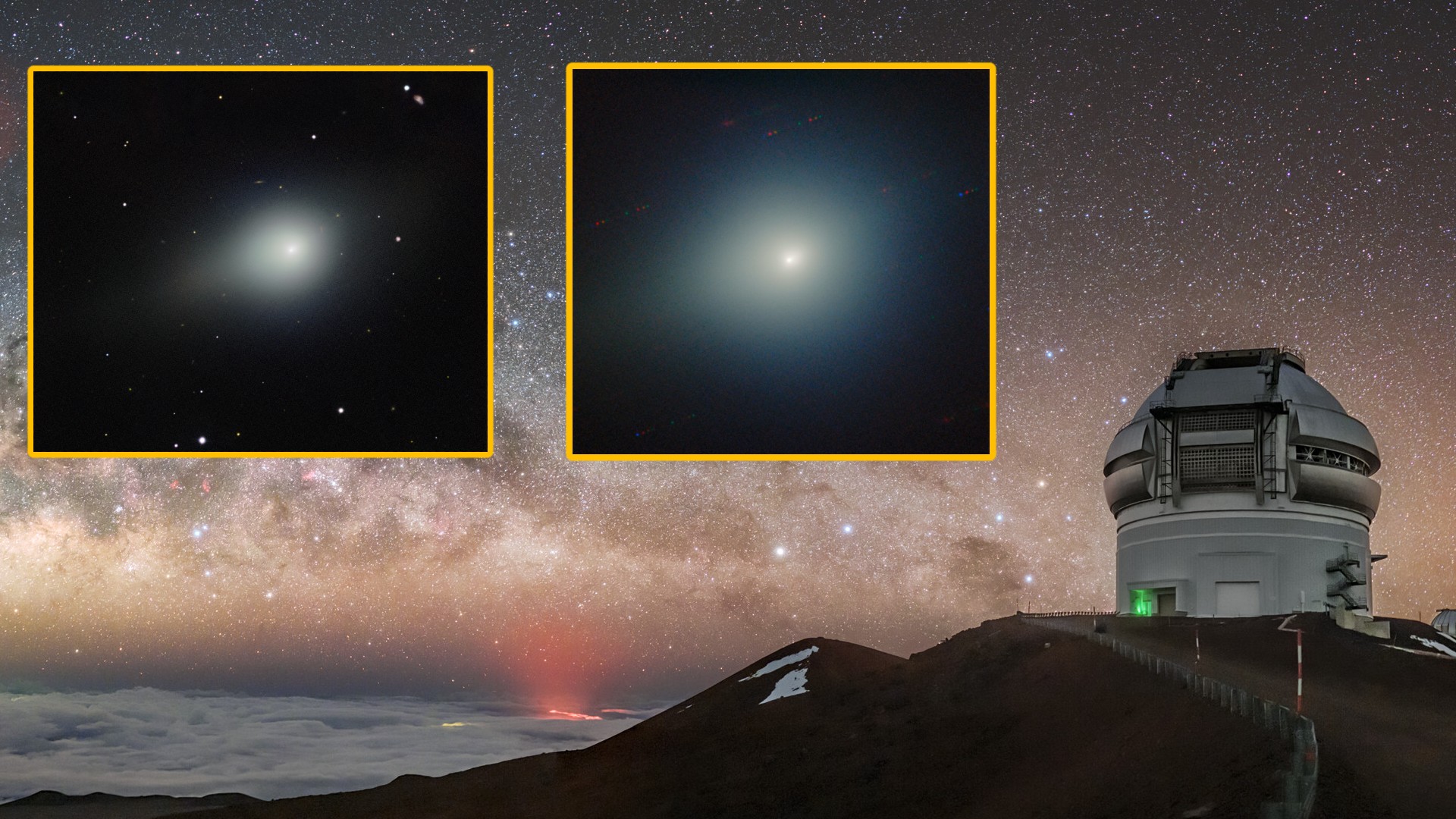This hot 'stream' of star gas will collide with our galaxy sooner than we thought
The Magellanic Stream is a cosmic battle scar from an ancient game of tug-of-war, and it’s headed right for us.

The Milky Way is playing a violent game of tug-of-war with its two toughest neighbors — the rowdy sibling dwarf galaxies known as the Large and Small Magellanic Clouds. It's hardly a fair contest. With a combined heft of about 17 billion solar masses (nearly 100 times scrawnier than the Milky Way), the two dwarf galaxies are slowly being torn apart by the gravity of our galaxy, and by each other.
More than 3 billion years of this cosmic pushing and pulling have left an enormous battle scar stretched across the Southern sky — a long, gassy arc known as the Magellanic Stream, trailing behind the Magellanic Clouds like a gout of stellar blood. One day, this stream will collide with our galaxy, flooding the Milky Way with star-forming gas and permanently changing the landscape of the night sky.
That day may be sooner than we thought.
According to new research published Nov. 8 in The Astrophysical Journal Letters, the Magellanic Stream is far closer to our galaxy than previous estimates had suggested. Accounting for recent observations of the stream's structure, a team of researchers simulated the history of the Large and Small Magellanic Clouds' interactions with each other and with our galaxy. They found that the stream sits just 65,000 light-years from Earth — or about five times closer than previously thought.
The implications for the Magellanic Stream and its future are huge; not only do these findings suggest that the stream is about one-fifth as massive as previously thought, but also that it will collide with our galaxy much sooner — likely within about 50 million years, the researchers wrote.
"The surprising part was that the models brought the stream much closer to [our galaxy]," lead study author Scott Lucchini, a graduate student in physics at the University of Wisconsin-Madison, said in a statement. "We now see that the stream is basically at the outer part of the disk of the Milky Way."
These new estimates for the stream's location hinge on research published last year in the journal Nature. (Lucchini was lead author of that paper, too). In that study, the researchers found that the Large Magellanic Cloud is surrounded by a "halo" of hot, ionized gas reaching temperatures of about 900,000 degrees Fahrenheit (500,000 degrees Celsius) — which is about one-half to one-sixth the heat of our sun's outermost layer. The team named this hot sheath the Magellanic Corona.
Get the world’s most fascinating discoveries delivered straight to your inbox.
The corona's existence changes the story of the formation of the Magellanic Clouds and the stream. The hot, gassy sheath around the larger cloud adds to the total mass of the dwarf galaxies, and it should significantly increase the friction and pressure exerted on the two galaxies as they move through the corona, the researchers wrote.
With these forces in mind, the team developed a new computer simulation to model the history of the Magellanic Clouds and the Magellanic Stream. The team worked backward, starting with the present locations of the clouds and turning back the clock through multiple simulations to show how the dwarf galaxies could have interacted over the eons in order to end up where they are now.
The team found that the two dwarf galaxies have been orbiting each other for only about 3 billion years. By the time the two galaxies were captured by the Milky Way, the Small Magellanic Cloud was orbiting counterclockwise around the Large one, spewing gas behind it and forming the Magellanic Stream. Contrary to prior studies, the team's simulations also showed that the stream is arcing toward the Milky Way, rather than away from it, with the two celestial bodies just 65,000 light-years away at their closest point. (The clouds themselves live much farther away, at about 180,000 and 200,000 light-years from Earth, respectively).
"The revised distance changes our understanding of the stream," study co-author Andrew Fox, a researcher at the Space Telescope Science Institute in Maryland, said in the statement.
This means everything scientists thought they knew about the stream needs to be reassessed — including when our galaxy will fully devour it, giving the Milky Way a fresh injection of star-forming gas. Any life-forms on Earth tens of millions of years from now may look up to see a sky completely different from our own — but for now, we'll just have to enjoy the faint, slow-motion tug-of-war playing out above our heads.
Originally published on Live Science.

Brandon is the space / physics editor at Live Science. With more than 20 years of editorial experience, his writing has appeared in The Washington Post, Reader's Digest, CBS.com, the Richard Dawkins Foundation website and other outlets. He holds a bachelor's degree in creative writing from the University of Arizona, with minors in journalism and media arts. His interests include black holes, asteroids and comets, and the search for extraterrestrial life.



